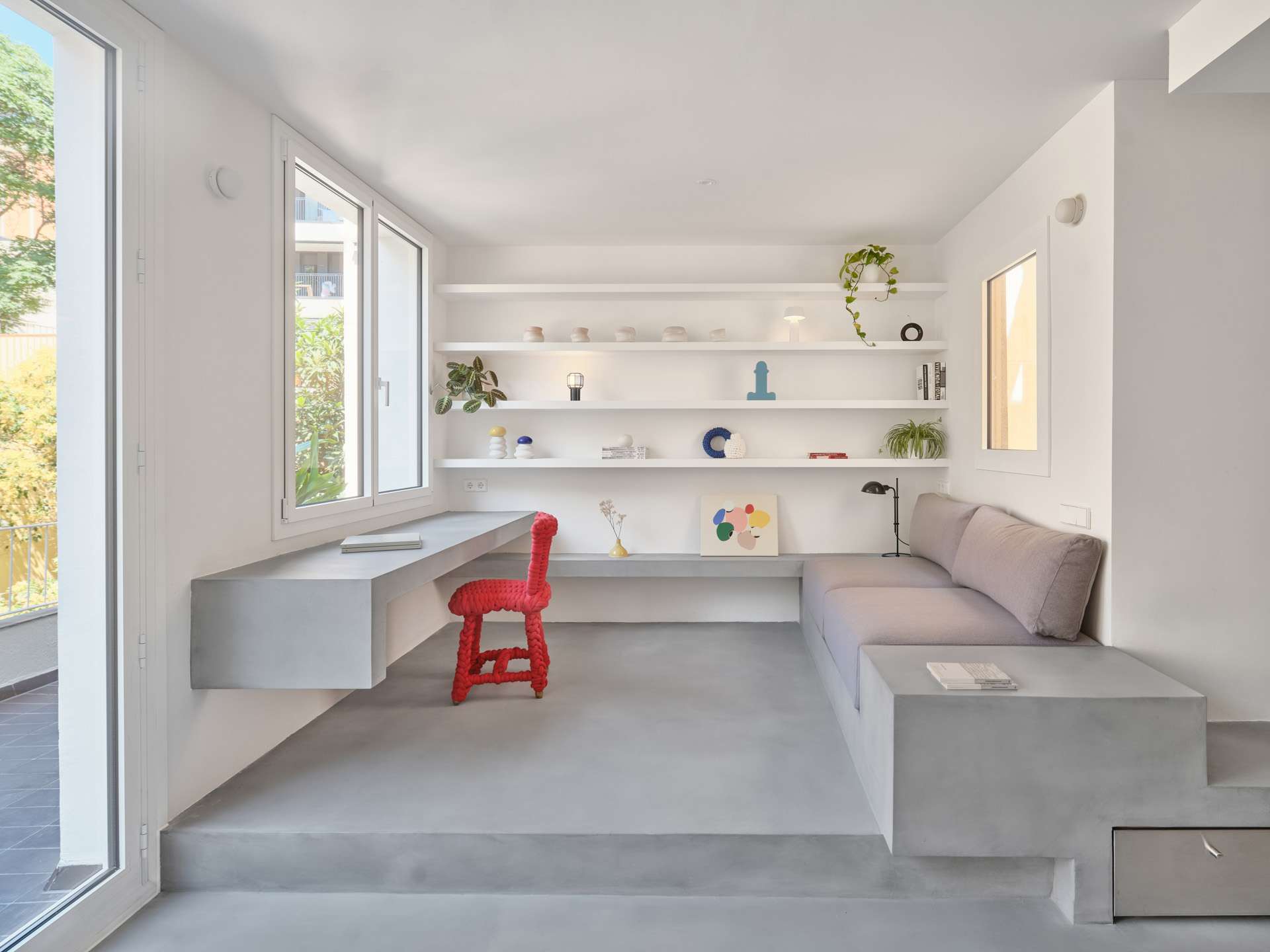
This project is featured as part of the D5 Digital Design Week: AI & Sustainability. To learn more, click here.
La Sienna, a recent project by the architecture studio CRÜ, is a remarkable example of how contemporary design can embrace sustainability and innovation while honoring the past. The thoughtful application of three essential strategies in the design of La Sienna demonstrates the studio’s commitment to merging aesthetics with functionality in a way that respects the environment and the space’s history.
At the heart of La Sienna’s design is a carefully crafted topography that defines the different functions of the space. CRÜ’s team sculpted elements within the layout to differentiate and accentuate key areas such as the study, kitchen, and rest spaces. A series of textured boxes thoughtfully shape these areas, each placed with a purpose to address design and practical needs, such as storage. The design doesn’t just consider surface aesthetics but also incorporates functionality, ensuring that each area is as purposeful as visually pleasing.
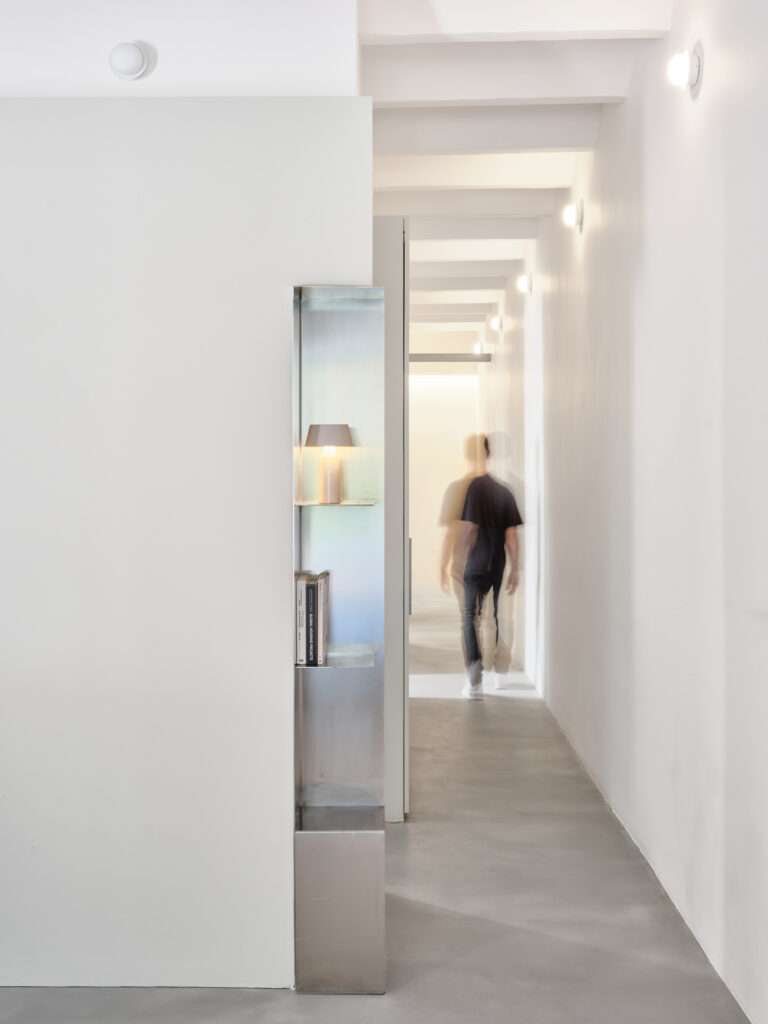

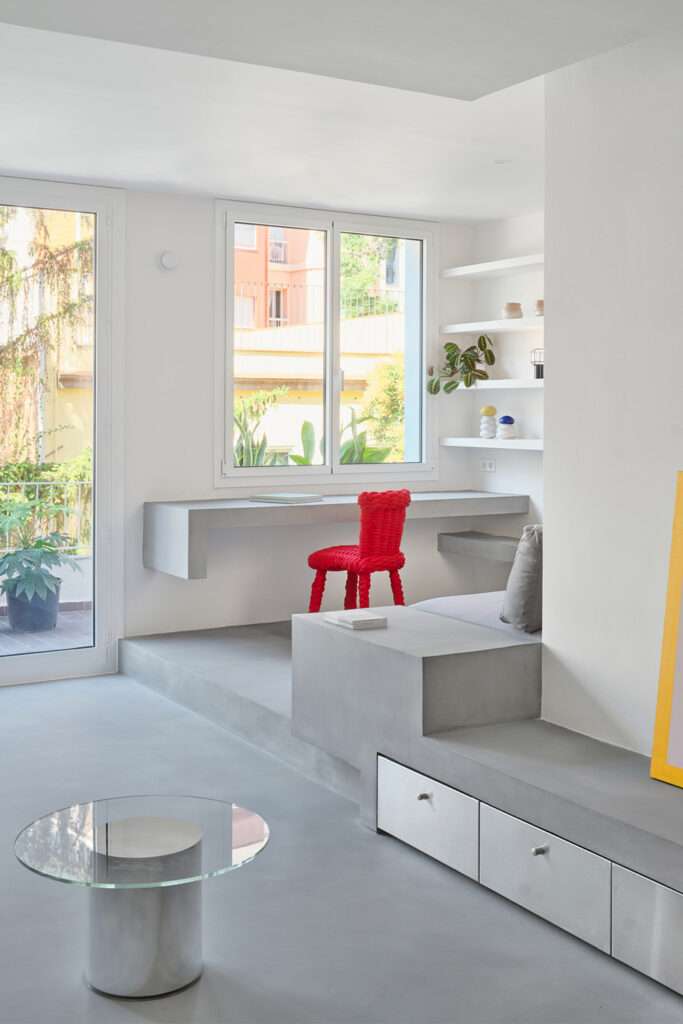
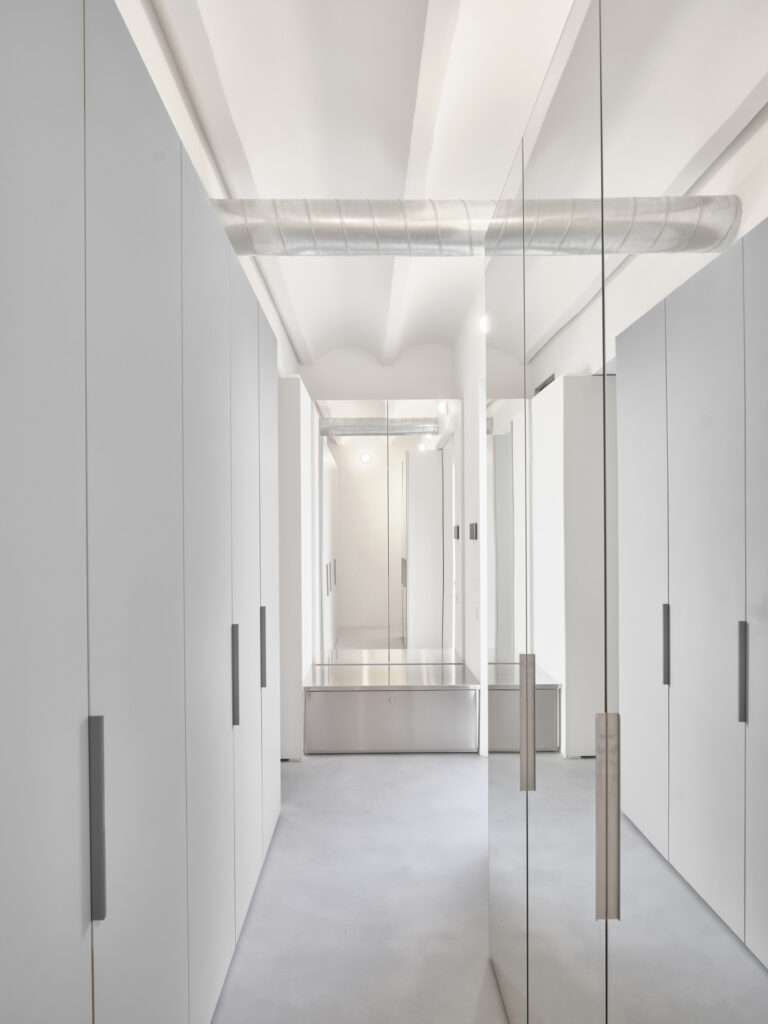


The new divisions within the space don’t just mark functional areas; they introduce a new domestic height, creating an environment where the flow and interaction between spaces feel intentional and dynamic. According to CRÜ, “Artificial intelligence has played a key role in the selection of materials for La Sienna through the creation of 3D models and ultra-realistic real-time renderings, which have served as creative bases to assess and discuss various possibilities in both geometry and materials for the project. Thanks to these technologies, we have been able to explore multiple design iterations, quickly evaluating how different configurations of spaces, textures, and materials affect the overall perception. This accelerates the decision-making process and energizes the creative process.”
The design of La Sienna is marked by an integration of neutral and refined materials, creating an environment of serenity and sophistication. The subtle use of textures throughout the space elevates the simplicity of the tones, contributing to an atmosphere of calm while also adding depth. “The neutrality of the tones brings serenity to the space while adding a touch of sophistication through textures,” says the CRÜ team.
Materials like steel, microcement, and vaulted tiles each play a unique role within this neutral palette. The reflections of steel add a modern touch, while the continuity of microcement provides a smooth, understated elegance. Meanwhile, the vaulted tiles’ distinctive texture offers an organic feel that complements the other materials. The interaction between stony and metallic worlds results in a sophisticated harmony where each material finds its place within the overall design. Mirrors and translucent materials are strategically placed, allowing the light to dance across the surfaces in perfect balance.



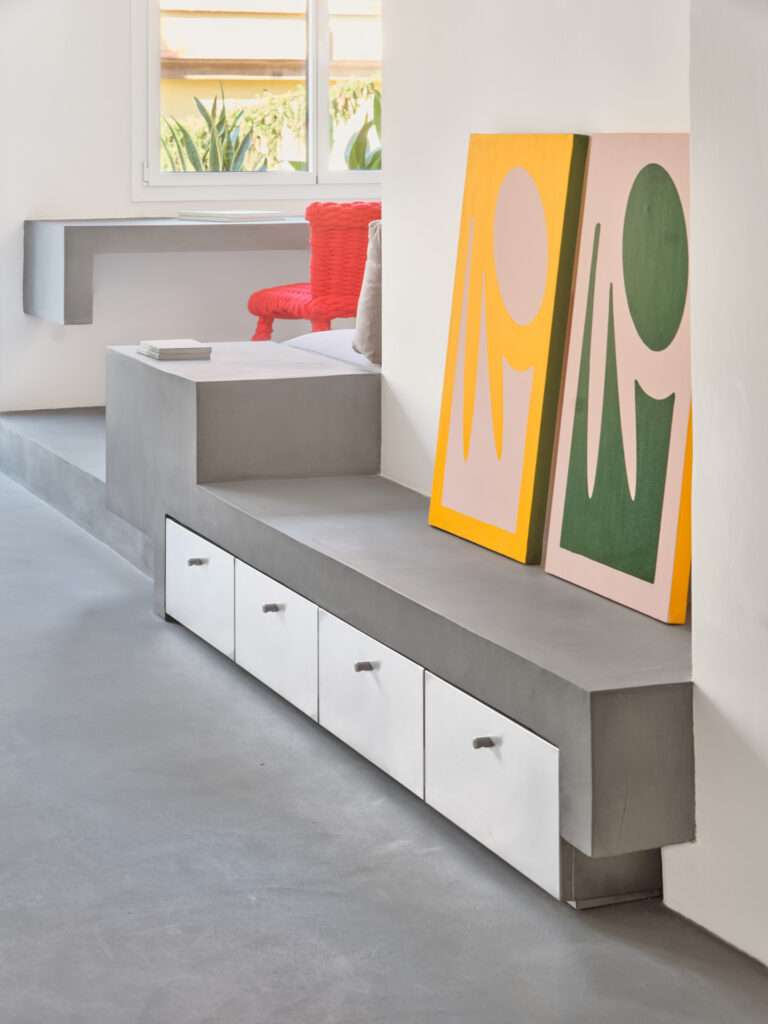
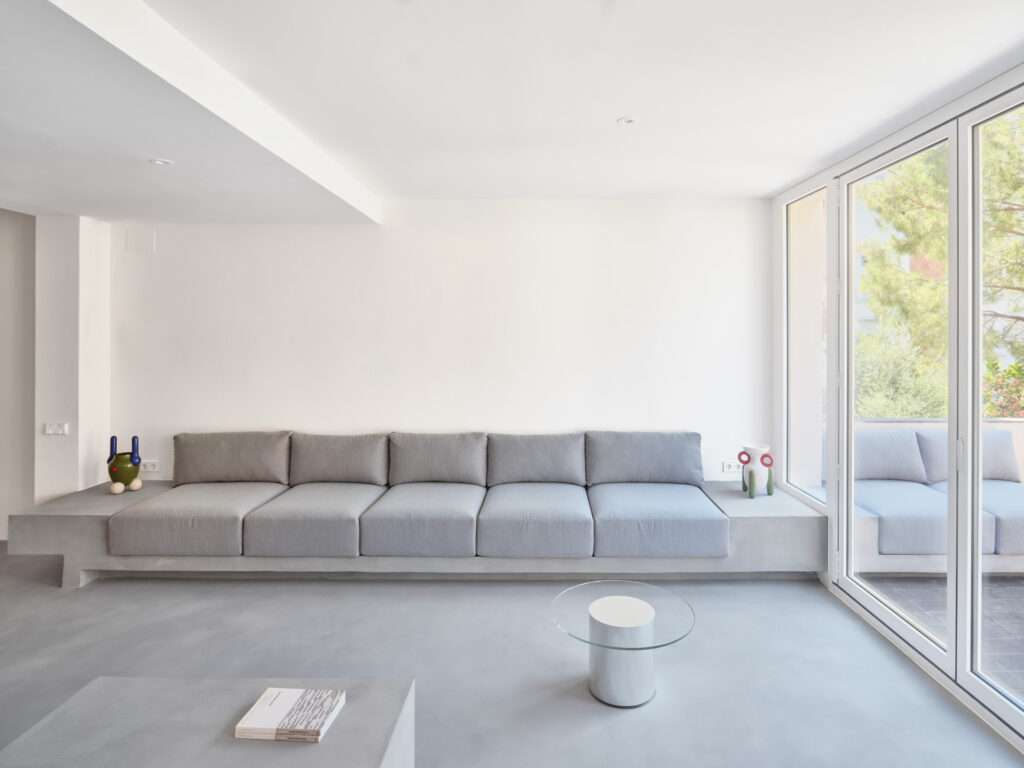



“The reuse of materials and structural elements in La Sienna has been integrated as a key sustainability strategy. Instead of completely replacing the existing divisions and partitions, the design leverages these features to redefine spaces,” explains the team. Rather than demolishing the old to make way for the new, the design incorporates existing structures, like the ceiling system, which had previously been hidden under a false ceiling. By exposing and highlighting these elements, they not only become a new texture in the space but also reduce the need for new materials, minimizing waste and the ecological footprint.
The restoration of original elements, such as the brick vaults, speaks to the project’s deep respect for the history of the space. The brick vaults have been carefully restored, maintaining their historical value while reducing the consumption of new materials. In addition, sustainable systems like aerothermal heating and cooling, along with continuous lime mortar coatings and efficient enclosures, further reinforce the project’s environmentally conscious approach. “By reusing existing elements, such as partitions or original structures, the environmental impact from demolition, transportation, and production of new materials is significantly reduced,” the CRÜ team adds.
CRÜ’s ability to blend technology, material innovation, and respect for the space’s history demonstrates how design can evolve without losing sight of the past. By integrating cutting-edge tools like artificial intelligence for material selection and making sustainability a core tenet of the project, La Sienna shows how architecture can adapt to modern needs while embracing the timelessness of quality materials and thoughtful design.

CRÜ is an architecture studio that promotes a vibrant dialogue with the pre-existing elements, melding the existing raw materials and the new layers of the project, with meticulous attention to detail, from the structure to the furniture.
Photos Courtesy of Adrià Goula.






